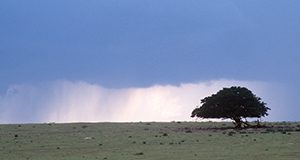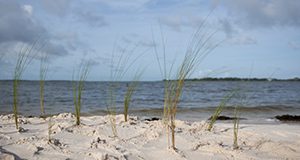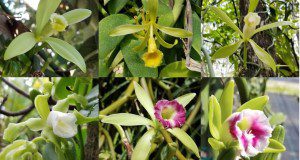Vegetable growers are keen on cost-cutting measures to increase profitability. Containerized vegetable production can be done in a shade-house or garden, and it often requires commercial potting media. Although expensive, potting media are lightweight and provide high water- and nutrient-holding capacities, and thus they are widely used by growers. Growers often discard or compost the potting media after a single season due to issues such as diseases, pests, and weeds. However, old potting media could be reused for containerized production if appropriately sterilized and amended with fertilizer salts. The current study was conducted to determine the feasibility of using sterilized recycled potting medium amended with fertilizer salts for containerized production of squash. This new 4-page publication of the UF/IFAS Horticultural Sciences Department was written by Marie Dorval, Riphine Mainviel, Vincent Michael, Yuqing Fu, Bala Rathinasabapathi, and Geoffrey Meru.
https://edis.ifas.ufl.edu/hs1404
Tag: UF/IFAS Tropical Research and Education Center
Consejos Basicos para Disenar Sistemas Eficientes de Riego
Este documento provee un panorama básico de los factores más importantes al diseñar. Written by Haimanote K. Bayabil, Kati W. Migliaccio, Michael Dukes, Laura Vasquez, and Carlos Balerdi, and published by the UF/IFAS Department of Agricultural and Biological Engineering, December 2020.
https://edis.ifas.ufl.edu/ae549
How Is Our Future Climate Projected?
Climate is the long-term patterns and fluctuations in air and moisture. This 5-page article explains how future climate is projected using mathematical models and introduces common scientific terms used when discussing climate change. Written by Young Gu Her, Zachary Brym, Ashley Smyth, and Elias Bassil, and published by the UF/IFAS Department of Agricultural and Biological Engineering, November 2020.
https://edis.ifas.ufl.edu/ae546
Sampling Guidelines and Recommendations for Submitting Samples for Diagnosing Laurel Wilt in Avocado Trees (Persea americana L.)
Laurel wilt (LW) is a vascular disease caused by a fungal pathogen transmitted to avocado trees by several ambrosia beetle species and through root grafts among adjacent avocado trees. A critical part of preventing and controlling plant diseases is determining the causal agent so that the appropriate management practices can be implemented to eradicate or contain the outbreak. Proper sampling is a critical step in disease diagnosis and in the determination of the causal agent of disease. This new 3-page publication of the UF/IFAS Horticultural Sciences Department was written by Jonathan Crane, Romina Gazis, Jeff Wasielewski, Daniel Carrillo, Bruce Schaffer, Fredy Ballen, and Edward Evans.
https://edis.ifas.ufl.edu/hs1394
How Are Our Future Agriculture and Natural Resources Projected under Varying Climate?
This 8-page article explains how agriculture and natural resources may respond to projected future climate and how climate projections can be useful in developing management plans for the improved sustainability of Florida's agriculture and natural resources. It also aims to help increase the public awareness of climate change impacts on Florida and improve understanding of the connections among climate, agriculture, and natural resources. Written by Young Gu Her, Ashley Smyth, Zachary Brym, and Elias Bassil, and published by the UF/IFAS Department of Agricultural and Biological Engineering, September 2020.
https://edis.ifas.ufl.edu/ae545
Online Sources for Sea Level Rise Education and Extension
The impacts of sea level rise on ecosystems and natural resources are a major concern in Florida, especially in low-lying coastal areas such as south Florida. Sea level rise can impact many aspects of Florida's economy, including urban development, agriculture, infrastructure, and natural areas. This 16-page document introduces, evaluates, and summarizes selected available online sources and tools to educate diverse stakeholders and concerned local residents on important aspects of sea level rise. Written by Young Gu Her, Ashley Smyth, Jiangxiao Qiu, Elias Bassil, Ulrich Stingl, and Laura Reynolds, and published by the UF/IFAS Department of Agricultural and Biological Engineering, June 2020.
https://edis.ifas.ufl.edu/ae543
Irrigation System Descriptions for Tropical and Subtropical Fruit Crops in Florida
Florida’s tropical and subtropical fruit crop industries use various irrigation systems, including high-volume systems designed for irrigation and freeze protection, drip systems for herbaceous fruit crops (papaya, banana), and microsprinkler types, mainly for irrigation and fertigation. There continues to be a steady stream of potential tropical and subtropical fruit producers in Florida, many with little to no knowledge of the various types or purposes of various irrigation system that have been used successfully for the past 60 years. This new 9-page publication of the UF/IFAS Horticultural Sciences Department includes potential producers, Extension faculty and agents, and irrigation companies. Written by Jonathan Crane, Haimanote Bayabil, Edward A. Evans, and Fredy Ballen.
https://edis.ifas.ufl.edu/hs1375
Bacterial Black Spot (BBS) of Mango in Florida
Bacterial black spot, caused by the bacterium Xanthomonas citri pv. mangiferaeindicae, is a relatively new (~2015) bacterial disease in Florida that has the potential to limit mango production of some cultivars. This new 6-page fact sheet provides the current knowledge and status of the disease potential on various cultivars. Written by Jonathan Crane and Romina Gazis, and published by the UF/IFAS Horticultural Sciences Department.
https://edis.ifas.ufl.edu/hs1369
Culture de la vanille dans le sud de la Floride
L’extrait de vanille est populaire dans le monde entier comme ingrédient dans la crème glacée et divers autres desserts. La source botanique de l’extrait de vanille provient principalement des gousses durcies (préparées) de l’espèce Vanilla planifolia. Les États-Unis sont les plus grands importateurs mondiaux de gousses de vanille, mais la production nationale est très faible. Toutefois, le sud de la Floride a un potentiel de production favorable á la culture de la vanille. Ce document contient des informations utiles aux producteurs intéressés par l’établissement d’une vanillerie.
This is the French version of HS1348, Vanilla Cultivation in Southern Florida. This new 9-page publication was written by Alan Chambers, Pamela Moon, Vovener de Verlands Edmond, and Elias Bassil, translated by Francesca Carla Erié, and published by the UF/IFAS Horticultural Sciences Department.
https://edis.ifas.ufl.edu/hs1351
Cultivo de vainilla en el sur de Florida
El extracto de vainilla es popular en el mundo entero como un ingrediente usado en helados y otros postres. La fuente botánica del extracto de vainilla es principalmente los frijoles curados de Vanilla planifolia. El Estados Unidos es el mayor importador mundial de vainilla judías, pero la producción nacional es mínima. El sur de la Florida tiene un clima de crecimiento favorable para el cultivo de vainilla. Este documento incluye información relevante para los productores interesados en establecer un cultivo de vainilla.
This is the Spanish version of HS1348, Vanilla Cultivation in Southern Florida. This new 8-page publication was written by Alan Chambers, Pamela Moon, Vovener de Verlands Edmond, and Elias Bassil, translated by Dayana Valdes, and published by the UF/IFAS Horticultural Sciences Department.
https://edis.ifas.ufl.edu/hs1350
Vanilla Cultivation in Southern Florida
Vanilla extract is popular around the world as an ingredient in ice cream and various other desserts. The botanical source of vanilla extract is primarily the cured beans of Vanilla planifolia. The United States is the world’s largest importer of vanilla beans, but domestic production is minimal. However, southern Florida has a favorable growing environment for vanilla cultivation. This new 7-page publication of the UF/IFAS Horticultural Sciences Department includes information relevant to growers interested in establishing a vanillery. Written by Alan H. Chambers, Pamela Moon, Vovener de Verlands Edmond, and Elias Bassil.
https://edis.ifas.ufl.edu/hs1348







